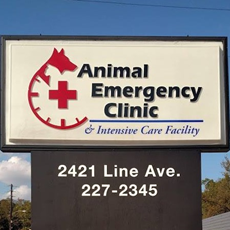Library
-
At first glance he may look like a short-legged Cocker Spaniel, and it is true, the Sussex Spaniel is one of the more unusual spaniel breeds. He is also one of the rarest of all AKC breeds, perhaps because he tends to be, shall we say... talkative, especially if left out of the fun. Otherwise, this mild-mannered spaniel makes a great pal and an easygoing, often overlooked family pet.
-
Skin gland, hair follicle, and sebaceous gland tumors are often benign. Matrical carcinoma and sebaceous gland adenocarcinoma are rare and more aggressive forms of the disease. Regardless of the type (sweat, hair, or sebaceous) diagnosis is made by fine needle aspiration, biopsy, and/or surgical removal and histopathology. Further treatment is reviewed.
-
The Swedish Vallhund is an alert, active, playful dog, always ready to join in whatever adventure you have in mind. He's devoted to family, especially good with children, and friendly to strangers.
-
H1N1 influenza virus emerged in pigs as a genetic sharing of DNA from both human and swine influenza viruses. It caused a deadly pandemic in 2009 and continues to be an important cause of illness today. Pets including cats and dogs can be infected from their owners and become ill. It is not yet known to transfer from pets to humans. Good hygiene and restricted exposure should be taken immediately if there is any sign of influenza-like infection to restrict spread between humans, and between humans and their pets or domestic animals.
-
Syncope (or fainting) is defined as a temporary loss of consciousness that occurs when the brain does not receive enough oxygen. Most dogs who experience syncope spontaneously recover once appropriate levels of oxygen reach the brain.
-
This handout explains syringomyelia and Chiari-like malformation in dogs, in which fluid-filled cavities in the spinal cord develop, leading to an abnormal sensation in affected dogs. The clinical signs of the condition, along with diagnosis, treatment, and prognosis, are described.
-
Systemic hypertension describes high blood pressure throughout the entire body. Hypertension in dogs is often due to an underlying disease (secondary hypertension). When there is no underlying disease, it is called primary hypertension. There are several signs of hypertension including sudden blindness, bleeding inside the globe of the eye, persistently dilated pupils, head tilt, seizures, disorientation, ataxia, circling, weakness or partial paralysis, nystagmus, increased drinking and urinating with the progression of chronic kidney disease, hematuria, and epistaxis. The treatment of dogs with hypertension depends upon the underlying cause. Medications commonly used to manage hypertension in dogs include angiotensin converting enzyme (ACE) inhibitors, angiotensin II receptor antagonists (ARBs), beta blockers, diuretics, and calcium channel blockers. The course of hypertension in dogs depends on the underlying cause.
-
Systemic lupus erythematosus (SLE) is an immune-mediated disease in which a dog's immune system begins to attack her own tissues.
-
Tacrolimus ophthalmic is applied to the eye and is used off label to treat KCS (dry eye) and other immune-mediated and inflammatory conditions of the eye. Give as directed. Side effects are not common but may include irritation, eyelid twitches, or hair loss around the eye. Do not use in pets that are allergic to it or have a viral or fungal infection in the eye. If a negative reaction occurs, please call your veterinary office.
-
Tadalafil is given by mouth or injection and is used off label to treat high blood pressure in the lungs. Give as directed. Side effects may include vomiting, diarrhea, decreased appetite, or skin redness in the groin area. Do not use in pets that are allergic to it or pets that take nitrate medications. If a negative reaction occurs, please call the veterinary office.




